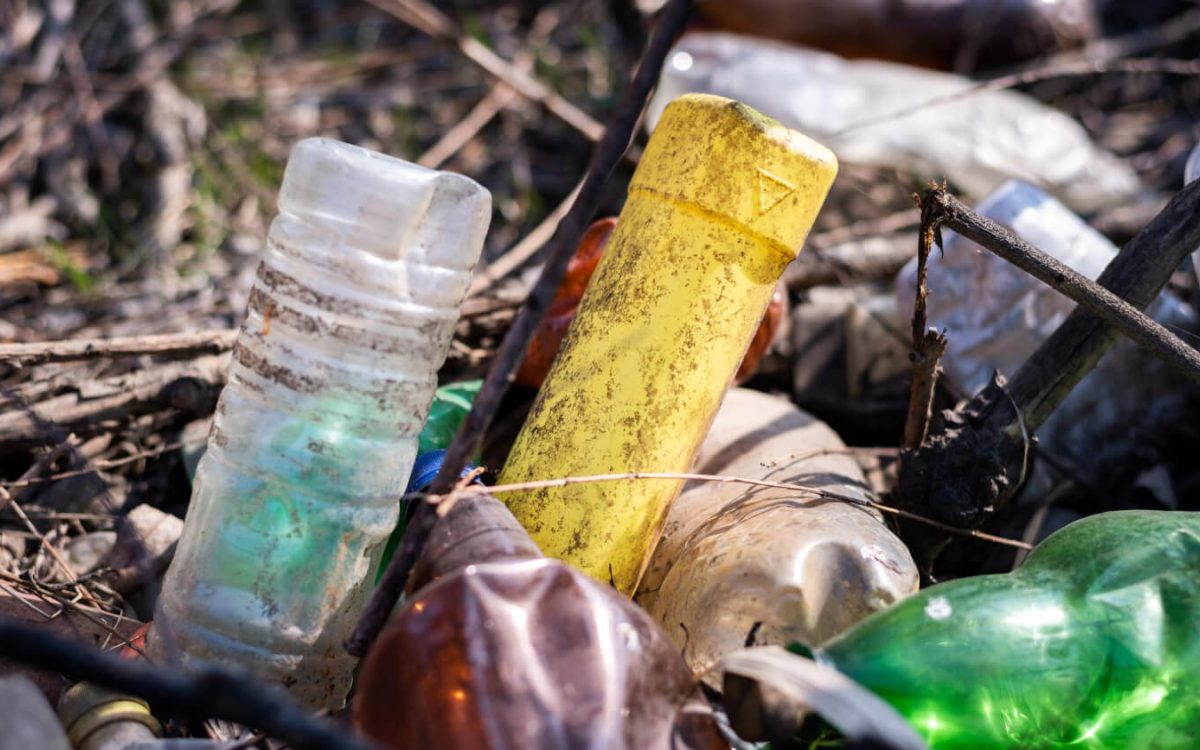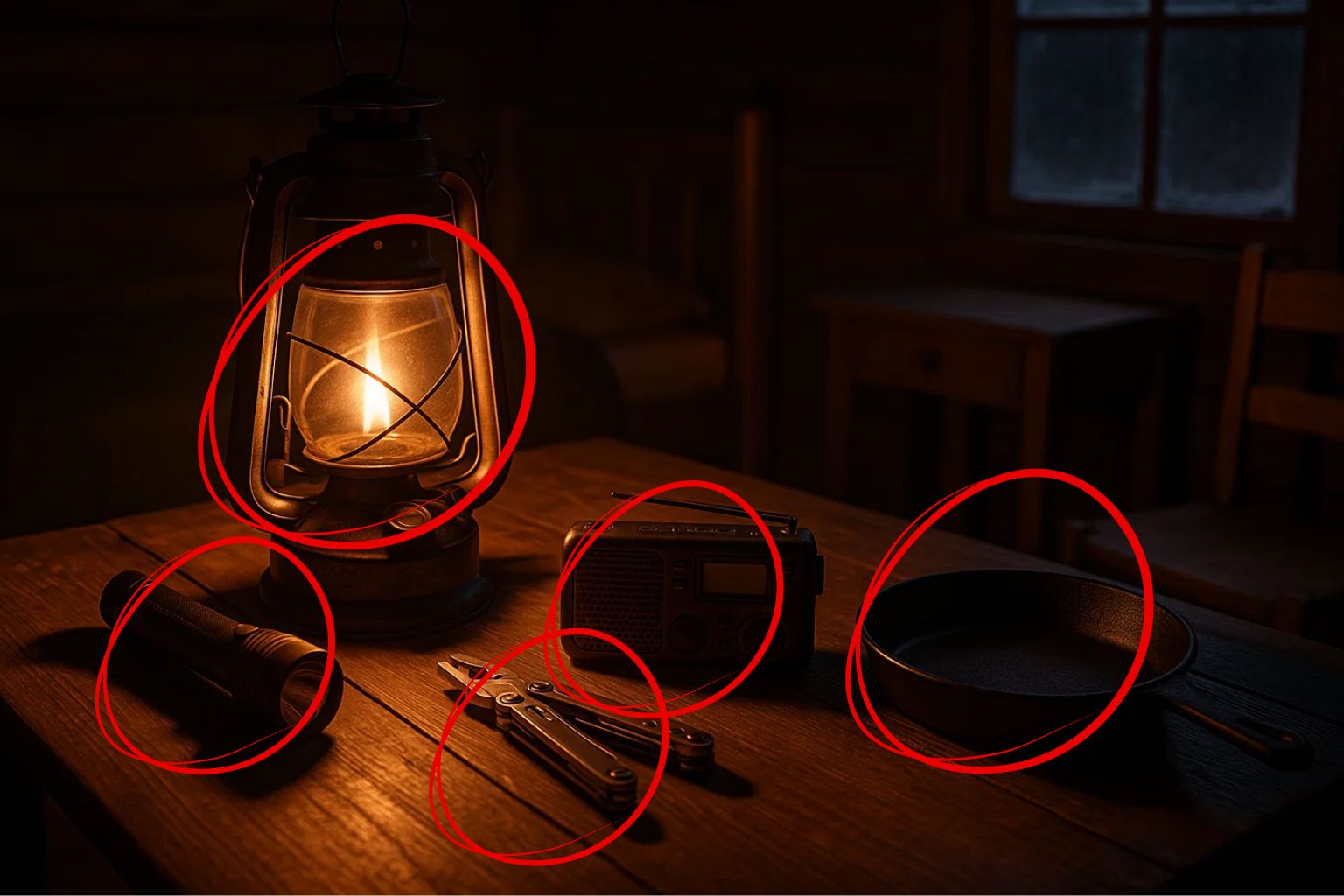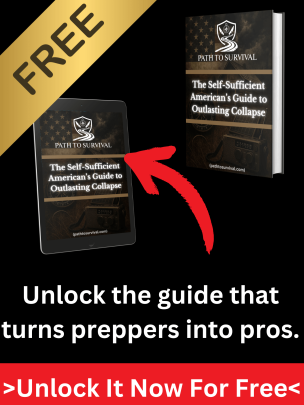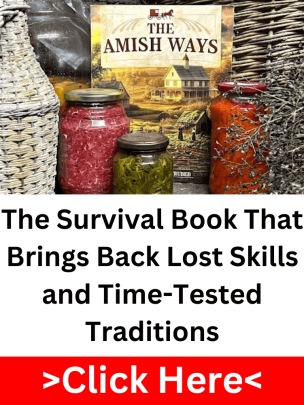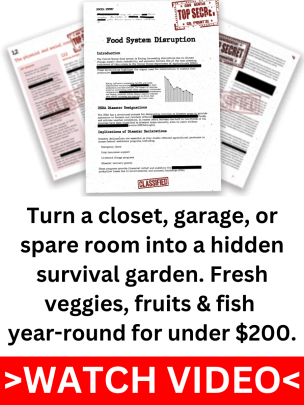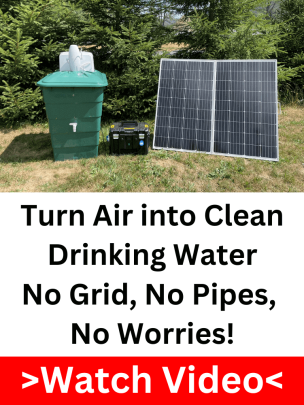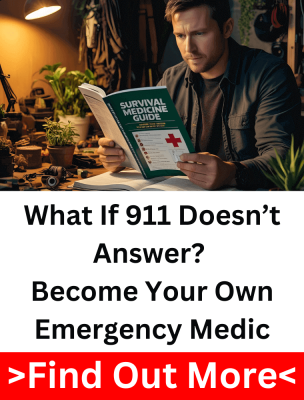Picture this: the shelves at your local store are stripped bare. The last gas station closed days ago. Streets are quiet except for the occasional desperate shout in the distance. It’s been a week since the grid went down, and the comfortable world you knew has shrunk to whatever’s within walking distance. In that kind of collapse, trash after SHTF stops being garbage, it becomes an opportunity.
Most people will step right over it, chasing after what they think are the “real” supplies, canned food, bottled water, batteries. But that’s a rookie mistake. Waste, the kind you’ve tossed out a thousand times without a second thought, might be exactly what keeps you warm, dry, or hydrated when the stores are gone for good. That’s the contrarian truth: the difference between surviving and suffering could be sitting in a trash pile.
If you can shift your thinking, the empty soda bottle, the tin can, the scrap of plastic sheeting, suddenly they’re not junk at all. They’re tools, insulation, water containers, even ways to cook a meal. Learning to see the hidden value in trash after SHTF isn’t just clever, it’s a skill that can keep you alive when everything else runs out.
Why Trash Gains Value After SHTF
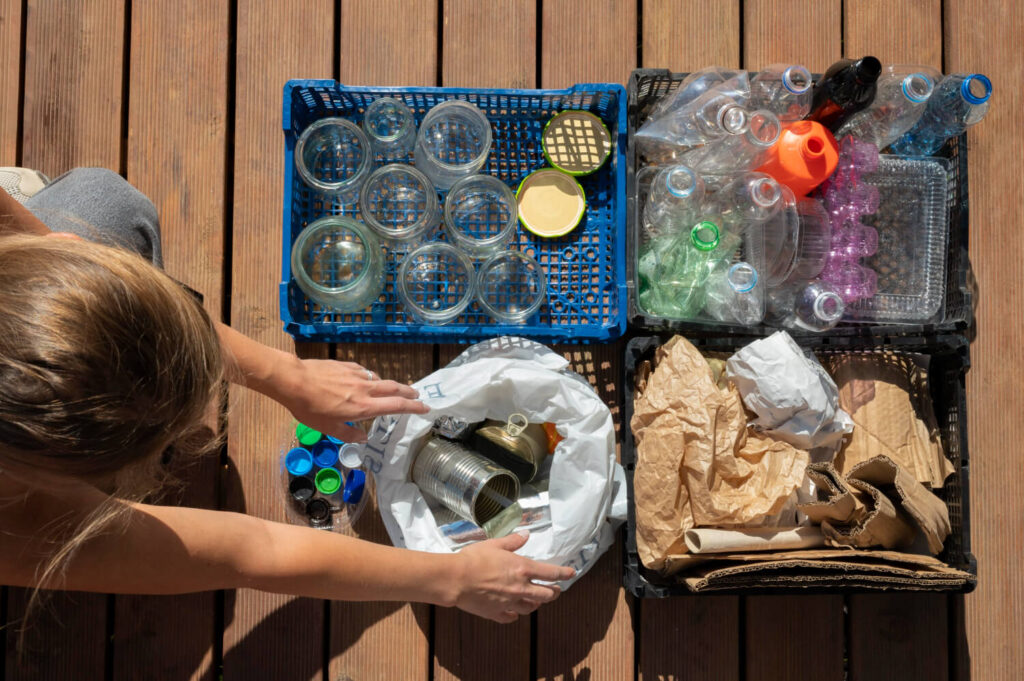
When the supply chain breaks, priorities flip overnight. Things you never gave a second glance suddenly climb to the top of your list. After a collapse, trash after SHTF is more than litter, it’s raw material you can’t just order online or pick up at the hardware store. Once the shelves are empty and the trucks stop rolling, every usable item becomes part of your survival inventory.
A dented metal can becomes a way to boil water. A sheet of clear plastic turns into a rain catchment. Even a sturdy cardboard box can help insulate a drafty corner of your shelter. In normal times, these things go in the bin without a thought. In a crisis, they’re currency, every scrap has a job, and knowing how to put it to work can give you a serious edge while others are still throwing resources away.
Water Security from “Waste”
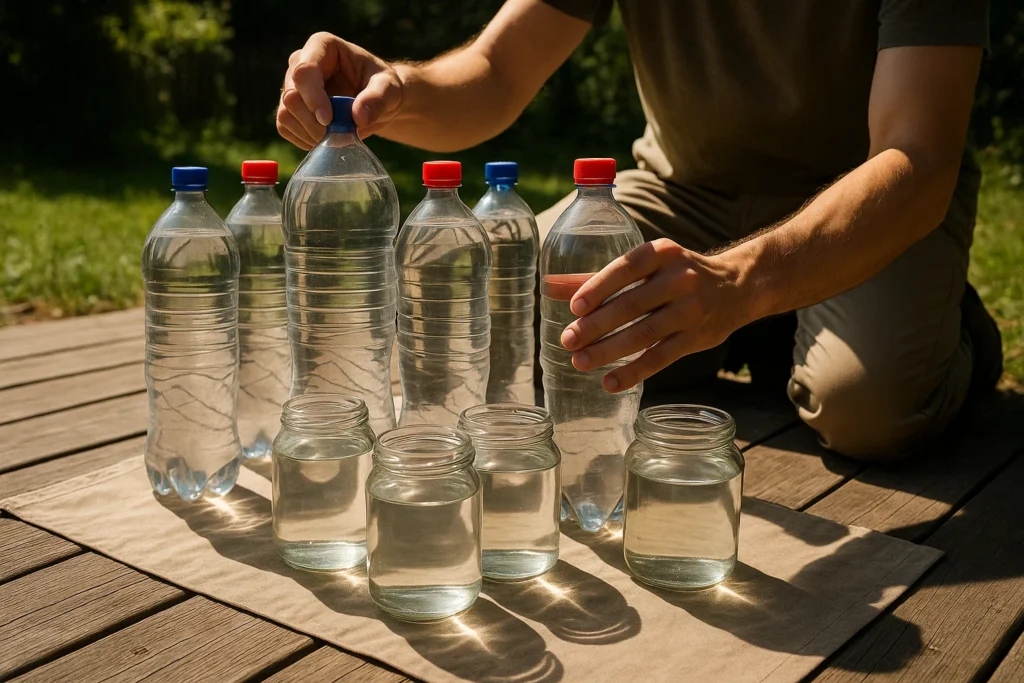
In any crisis, water is non-negotiable. If you’ve ever had the taps go dry, you know just how fast panic sets in. That’s when the way you look at trash after SHTF can mean the difference between clean drinking water and a dangerous gamble. Safe, food-grade containers, think juice jugs, two-liter soda bottles, or glass jars, are worth hanging onto. Wash and sanitize them, and you’ve instantly got extra storage for whatever water you can collect.
Some of the best finds during SHTF scavenging are clear PET plastic bottles. They’re light, tough, and perfect for a proven method called SODIS, or solar disinfection. Fill a clear PET bottle with filtered water, leave it in full sunlight for about six hours, and the UV rays will kill most harmful microbes. It’s not as fast as boiling, but when fuel is scarce, the sun’s free and endless.
Other Article: Grow These 5 Plants Before a Crisis Hits
Just remember, not every container is safe. Anything that’s ever held chemicals, paint, or fuel is off-limits for drinking water, no matter how clean it looks. In a pinch, those can still be used for non-potable storage, like carrying wash water or mixing cleaning solutions, but they’re never worth risking your health. Knowing the difference is part of turning everyday waste into a survival asset.
Cooking and Heat from Repurposed Items
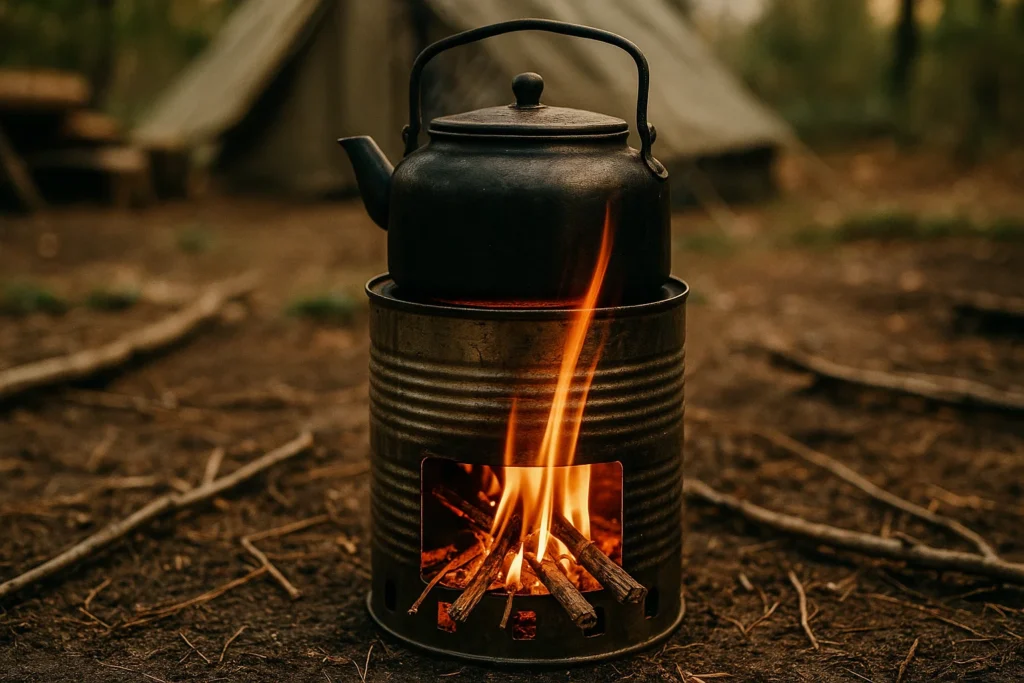
When the grid’s down and your propane runs dry, cooking a hot meal becomes a lot trickier. This is where knowing how to use trash after SHTF pays off. A large food can can be turned into a simple outdoor “hobo stove” with just a few cuts and ventilation holes. Drop in some small sticks, twigs, or charcoal, and you’ve got a controlled flame that can boil water or cook a one-pot meal. It’s not fancy, but in a pinch, it gets the job done without burning through your main fuel reserves.
For longer-term heat or backup cooking fuel, paper and cardboard waste can be compressed into homemade briquettes. They burn slower than loose paper and give you a usable heat source when firewood is scarce. It’s a great way to stretch limited resources, but like any improvised stove or fuel, keep it outdoors or in a well-ventilated area, carbon monoxide doesn’t care if you’re trying to survive.
Shelter and Warmth from Discarded Materials
When the temperature drops and the power’s gone, keeping heat in becomes just as important as making it. That’s where trash after SHTF can be a lifesaver. Clear plastic sheeting from packaging, construction leftovers, or even painter’s drop cloths can be stretched over windows to cut down on drafts. It’s a quick, no-cost barrier that helps hold in warmth while still letting light through during the day.
Cardboard might not look like much, but layered across floors or against uninsulated walls, it traps air and adds a surprising amount of insulation. Lay it under bedding to block cold seeping up from the ground, or fit panels inside wall studs for a quick thermal boost. It’s not a long-term fix, but in the middle of winter, you’ll feel the difference.
The only caution is placement. Keep cardboard, plastic, and any flammable material well clear of stoves, heaters, or open flames. Improvised insulation can keep you warm, but if you get careless, it can also turn into fuel for a fire you can’t afford to fight.
Tools, Cordage, and Repairs from Scavenged Trash
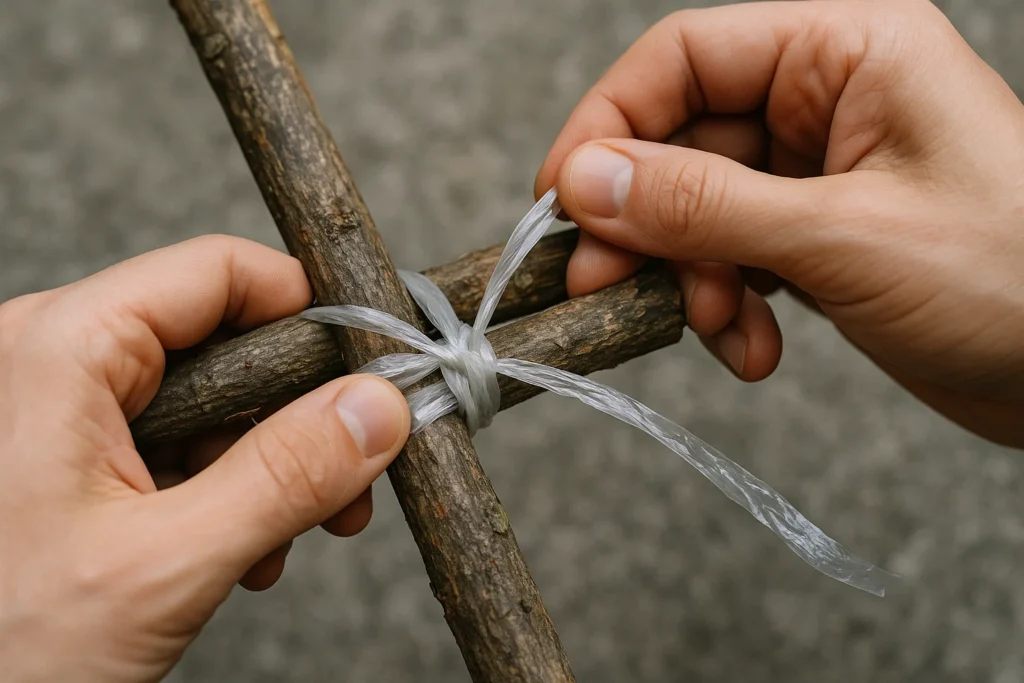
Not every problem after a collapse is about food or shelter, sometimes it’s about fixing something before it fails completely. That’s when knowing how to use trash after SHTF really shows its value. PET plastic bottles, the same ones you’d use for water storage or purification, can be cut into long, thin strips that make surprisingly strong cordage. It’s perfect for lashing poles, securing tarps, or bundling gear together when you’re short on rope.
Other Article: 5 Off-Grid Fixes the Amish Use (That Still Work Today)
Metal scraps, jar lids, and even aluminum can tabs can be shaped into small hooks, fasteners, or makeshift hinges. In a world where hardware stores are just locked buildings, these little improvised parts can keep your shelter standing, your gear functional, and your repairs holding long enough to matter.
Medical and First Aid Uses for Common Debris
Injuries don’t stop just because stores are closed and ambulances aren’t coming. That’s why it pays to see trash after SHTF as part of your emergency medical kit. Cardboard, stacked newspapers, and a roll of tape can be turned into an effective splint to immobilize a broken limb or serious sprain. It’s not high-tech, but it can stabilize the injury until you can get better care or the patient heals enough to move safely.
Cloth from old clothing, sheets, or towels can be cut into bandages, as long as you sterilize them first by boiling or using a disinfectant. In a post-collapse setting, keeping wounds clean is just as important as treating them. Infection can turn a small cut into a life-threatening problem, so having clean, reusable bandages on hand could be a game-changer.
Safety Rules When Using Post-Crisis Trash
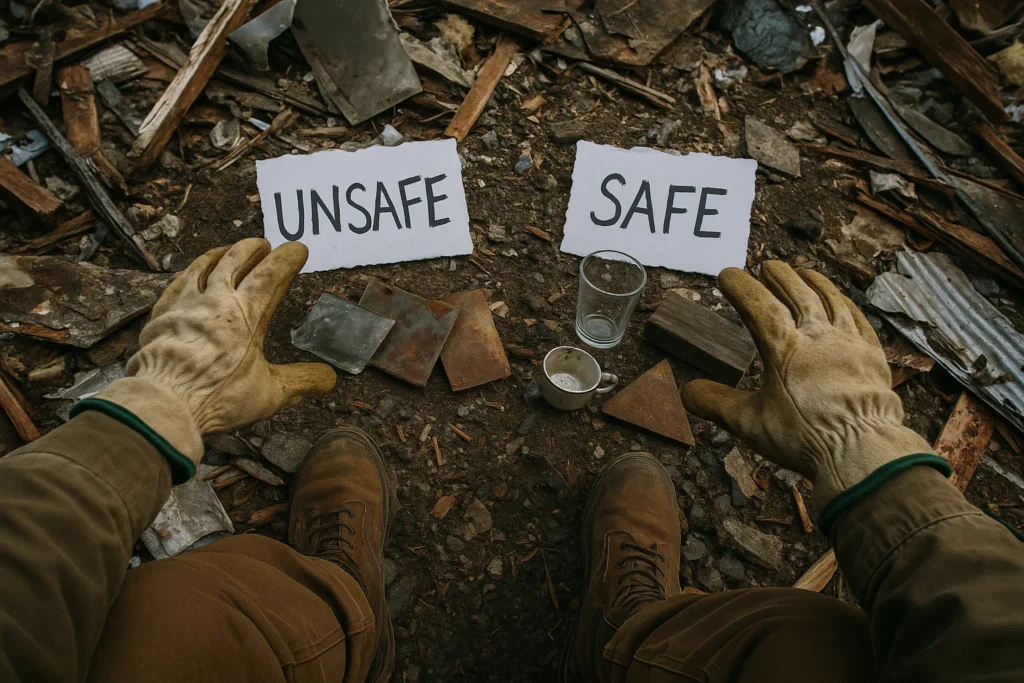
Not all waste is worth the risk. Even if you’ve trained yourself to see the value in trash after SHTF, you’ve also got to think about safety. Always wear gloves when scavenging, and sturdy boots if you’re moving through debris. Broken glass, sharp metal edges, and hidden nails can turn a quick salvage run into a trip to treat a nasty cut, something you can’t afford in a collapse.
If you’re using improvised stoves or burning any kind of fuel, do it outside or in a well-ventilated area. Carbon monoxide is invisible, odorless, and deadly. The same goes for using cardboard, paper, or wood scraps near open flames, keep flammable items well away from your heat source. Survival isn’t just about finding solutions; it’s about avoiding the dangers that come with them.
Finally, know what to keep and what to leave behind. Separate useful salvage, like clean food-grade containers, sturdy metal, or intact plastic, from hazardous waste such as chemical containers, oily rags, or anything with mold. Some materials have no safe reuse in a survival setting, and hauling them back to camp just puts you and your gear at risk.
When you boil it down, surviving after a collapse isn’t just about what you’ve stockpiled, it’s about what you can make use of when the stockpile runs low. The value of trash after SHTF is in its versatility. Bottles turn into water containers, cans become stoves, cardboard insulates your shelter, and fabric becomes clean bandages. Every scrap you can repurpose is one less thing you have to risk your safety finding elsewhere.
The best time to start thinking this way is now, not when the shelves are empty and the power’s gone for good. Get in the habit of looking at your everyday waste as potential survival gear. Practice the skills to clean it, store it, and use it safely. That mindset, the one that sees possibility in what others throw away, might be the most valuable tool you carry into any crisis.

